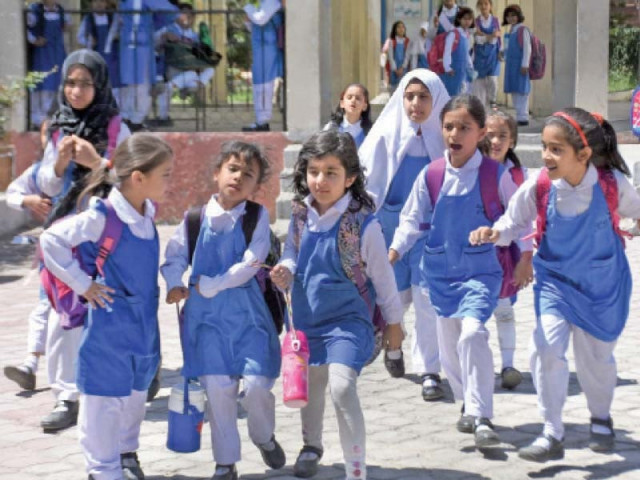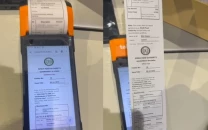The abysmal state of Pindi’s education system
Dearth of teachers, dilapidated buildings and poor results characterised the previous year

The year 2023 saw Rawalpindi’s education department go through challenging times as it dealt with troubles such as teacher shortages, lack of funding and dilapidated infrastructure.
Just to give a picture, some of the problems included schools not hiring staff despite there being open positions, damaged school buildings, lack of fixed and standardised academic rules and students’ studies and exam results suffering as a result.
As many as 1,250 upgraded schools were unable to make any new appointments this year. Even from the existing pool of teachers, 60% were reported to be engaged in other public assignments such as delivering polio and dengue vaccines, and counting of votes and area population for census.
Heightening problems caused teachers and non-teaching organisations to come out on the streets in protest.
Punjab Teachers Union Central Secretary General Rana Liaquat said the government has upgraded more than 3,000 schools in villages as well as started new classes, but the teachers are still not receiving their due pay. Despite the ban, they are forced to take up non-teaching responsibilities, which has an impact on children’s education.
The education system also suffers from a track record of shifting standards and changing rules. Over the last three years, the examination system changed to a 14-month format from an annual examination system. Even though this year, the new academic year started on time, the education system often falls victim to the woes of continual experimentation.
The Holy Quran recitation was declared compulsory this year, however, despite this, recitation teachers were not hired even after a year and six months.
Read Schoolchildren to receive robotics education
Since government schools have not been recruiting new teachers for the past 15 years, the number of teachers is on the decline. Job promotion of teachers is not implemented regularly either.
In Punjab, there are a total of 48,504 schools with 336,844 teachers for 1,280,448 students. At the same time, 15.5 million children remain out of school. While 113,732 teachers’ seats remain vacant in Punjab. Out of this, 71,536 seats belong to primary schools, 22,801 to middle schools, 7,494 to high schools, 7,063 are for subject specialists and 4,197 for the positions of principal and headmaster.
As for Rawalpindi district, there are a total of 1,809 schools, 15,379 appointed teachers and 409,494 students. Currently, there are 353 PhD, 29,801 MPhil, 160,700 MA and MSc, 51,115 BA, 13,989 FA and 20,643 matric-pass teachers in government schools.
Problems in the education system often have a greater impact on female students, who already form the greater portion of out-of-school children. This problem was exacerbated in the past year as more students, particularly girls, dropped out of school owing to disorganised teaching methods. Statistics showed that in villages, female students dropped out of schools in large numbers after primary school.
Moreover, the annual matriculation and intermediate exam results were equally abysmal. The number of students who failed their board exams has exceeded 50%.
Moreover, many government schools have failed to pay their electricity, gas and telephone bills due to a reduction in schools’ Non-Salary Budget (NSB) funds as well as the regular unavailability of these funds.
Read ‘Students must get job-oriented education’
There were also reports of school buildings enduring decayed and broken, leaking roofs following earthquake tremors, which could not be repaired.
Just this past year, 3,512 school buildings and classrooms suffered from leakages during the rainy season. As many as 3,155 schools still do not have boundary walls, 3,713 do not have electricity and 21,000 do not have any security guards.
In many schools, the roles of guard, janitor and peon were treated as one and staff was not appropriately hired for each role. Additionally, many schools are not equipped with adequate furniture. There are no science labs in 5,412 schools and no computer labs in around 2,013 schools.
Owing to the deplorable conditions of schools, the number of new pupils admitted to government schools this year also fell short of the goal. Only 30 to 35% of new admissions were successfully made.
SES Teachers Union Central Secretary of Punjab, Muhammad Shafiq Bhalwalia and Chaudhary Zafar Iqbal said that school disruption has also been brought on by problems with pensions and leave encashment. Teachers are suffering from inflation. Dengue, polio, census and list duties have paralysed the teaching system by overburdening staff. The teachers will surely provide quality work if their issues are resolved.
District Education Authority Chief Executive Officer Yasin Baloch, on the other hand, said “Teachers’ promotion system has been made regular. We solve all teachers’ and schools’ problems as best as we can.”
Even the President of the Educators Association, Basharat Iqbal Raja, when prompted to comment on the education system’s situation stated “Government schools have highly qualified teachers and free education. Classroom furniture has also been improved. All teachers need are facilities. We just request them to not take non-teaching duties and we’ll deliver the best outcomes.”
Published in The Express Tribune, January 1st, 2024



















COMMENTS
Comments are moderated and generally will be posted if they are on-topic and not abusive.
For more information, please see our Comments FAQ